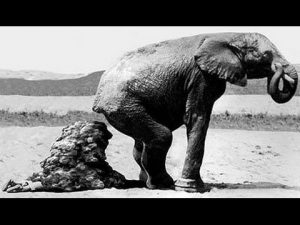Fecal-oral pathogens are transmitted through complex, environmentally mediated pathways. Sanitation interventions that isolate human feces from the environment may reduce transmission but have shown limited impact on environmental contamination.
 We conducted a study in rural Bangladesh to (1) quantify domestic fecal contamination in settings with high on-site sanitation coverage; (2) determine how domestic animals affect fecal contamination; and (3) assess how each environmental pathway affects others. We collected water, hand rinse, food, soil and fly samples from 608 households. We analyzed samples with IDEXX Quantitray for the most probable number (MPN) of E. coli.
We conducted a study in rural Bangladesh to (1) quantify domestic fecal contamination in settings with high on-site sanitation coverage; (2) determine how domestic animals affect fecal contamination; and (3) assess how each environmental pathway affects others. We collected water, hand rinse, food, soil and fly samples from 608 households. We analyzed samples with IDEXX Quantitray for the most probable number (MPN) of E. coli.
We detected E. coli in source water (25%), stored water (77%), child hands (43%), food (58%), flies (50%), ponds (97%) and soil (95%). Soil had >120,000 mean MPN E. coli per gram. In compounds with vs. without animals, E. coli was higher by 0.54 log10 in soil, 0.40 log10 in stored water and 0.61 log10 in food (p<0.05). E. coli in stored water and food increased with increasing E. coli in soil, ponds, source water and hands.
We provide empirical evidence of fecal transmission in the domestic environment despite on-site sanitation. Animal feces contribute to fecal contamination, and fecal indicator bacteria do not strictly indicate human fecal contamination when animals are present.
Animal feces contribute to domestic fecal contamination: Evidence from E. coli measured in water, hands, food, flies, and soil in Bangladesh
Environmental Science and Technology, July 2017, Ayse Ercumen, Amy Janel Pickering, Laura H. Kwong, Benjamin Arnold, Sarker Masud Parvez, Mahfuja Alam, Debashis Sen, Sharmin Islam, Craig Kullmann, Claire Chase, Rokeya Ahmed, Leanne Unicomb, Stephen Luby, and John M. Colford, DOI: 10.1021/acs.est.7b01710
http://pubs.acs.org/doi/abs/10.1021/acs.est.7b01710?journalCode=esthag
